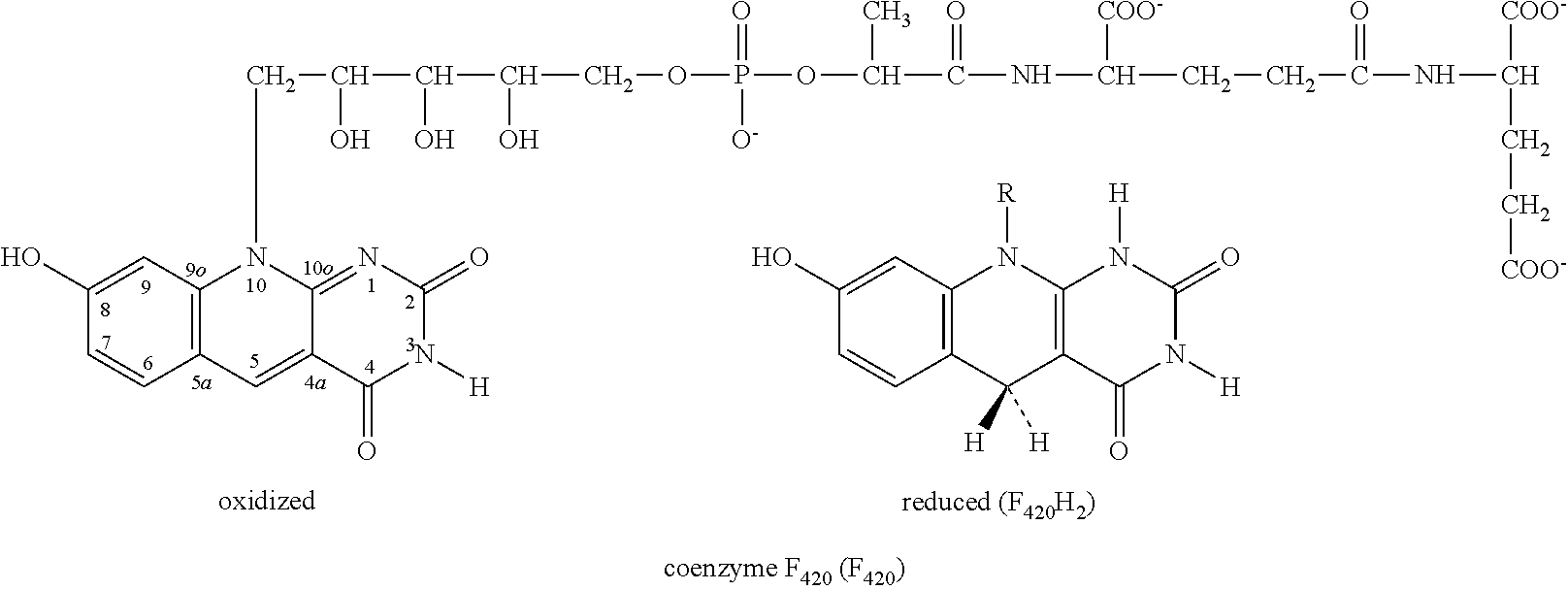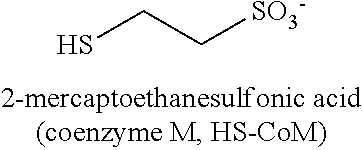Inhibition of methane production during anaerobic reductive dechlorination
a technology of anaerobic reductive dechlorination and methane, which is applied in the direction of biological water/sewage treatment, waste based fuel, transferases, etc., can solve the problems of hazard to public health and the environment, contamination of soil and groundwater, and the cost of cleaning these sites will be more than $45 billion over the next several decades, so as to reduce the emission level and affect the competition of methanogens.
- Summary
- Abstract
- Description
- Claims
- Application Information
AI Technical Summary
Benefits of technology
Problems solved by technology
Method used
Image
Examples
Embodiment Construction
[0026]Biological methane formation is a microbial process catalyzed by methanogens. The methanogenic pathways of all species have in common the conversion of a methyl group to methane; however the origin of the methyl group varies. Most species are capable of reducing carbon dioxide (CO2) to a methyl group with either a molecular hydrogen (H2) or formate as the reductant. Methane production pathways in methanogens that utilize CO2 and H2, involve specific methanogen enzymes, which catalyze unique reactions using unique coenzymes. Biosynthetic enzyme, 4-(β-D-ribofuranosyl)aminobenzene-5′-phosphate (β-RFA-P) synthase, is a key enzyme that catalyzes the first step of in methanopterin biosynthesis. This enzyme catalyzes the condensation between para-aminobenzoic acid (pABA) and 5-phospho-α-D-ribosyl-1-pyrophosphate (PRPP) with concomitant formation of β-RFA-P, CO2, and inorganic pyrophosphate (PPi). This enzyme is a phosphoribosyltransferase and a decarboxylase and forms a C-riboside, w...
PUM
| Property | Measurement | Unit |
|---|---|---|
| concentration | aaaaa | aaaaa |
| concentrations | aaaaa | aaaaa |
| surface structures | aaaaa | aaaaa |
Abstract
Description
Claims
Application Information
 Login to View More
Login to View More - R&D
- Intellectual Property
- Life Sciences
- Materials
- Tech Scout
- Unparalleled Data Quality
- Higher Quality Content
- 60% Fewer Hallucinations
Browse by: Latest US Patents, China's latest patents, Technical Efficacy Thesaurus, Application Domain, Technology Topic, Popular Technical Reports.
© 2025 PatSnap. All rights reserved.Legal|Privacy policy|Modern Slavery Act Transparency Statement|Sitemap|About US| Contact US: help@patsnap.com



